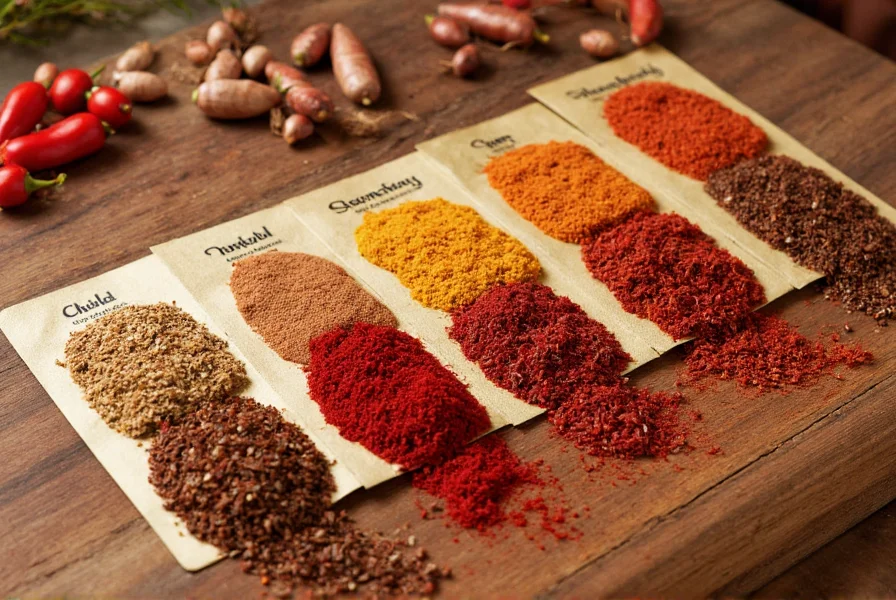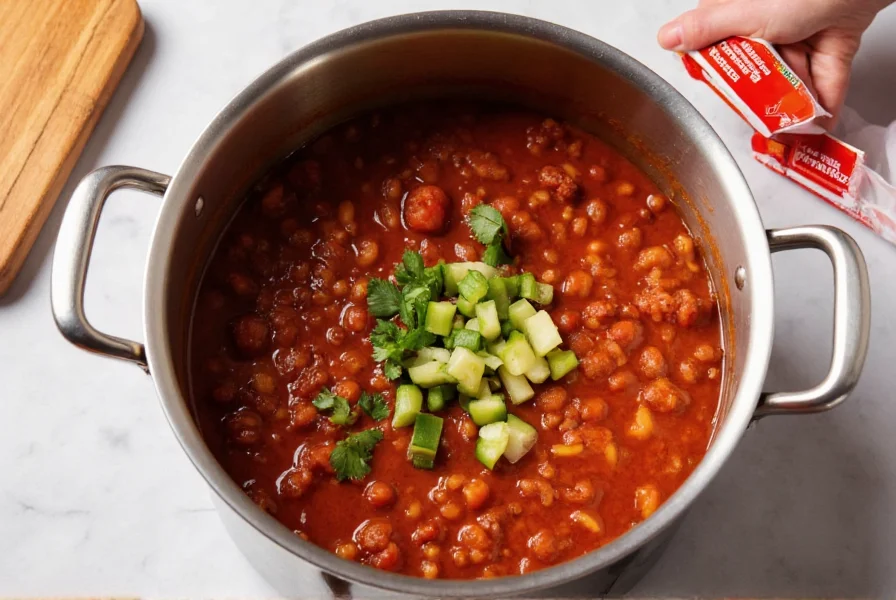Choosing the right chili seasoning packet can transform your dish from ordinary to exceptional. With countless options lining grocery shelves, understanding what makes a quality blend matters more than ever. This guide examines the key factors that separate superior chili seasoning packets from mediocre ones, helping you make informed choices for your next cooking adventure.
What Makes a Quality Chili Seasoning Packet
When evaluating the best chili seasoning packet options, several critical elements determine quality. The ingredient list reveals whether you're getting authentic spices or filler ingredients. Premium blends use whole spices ground fresh, while lower-quality options often contain excessive salt, anti-caking agents, or artificial flavors.
Sodium content varies dramatically between brands. Some packets contain up to 500mg per serving, which can overwhelm other flavors. The ideal chili seasoning packet balances salt with complementary spices like cumin, garlic powder, and paprika. Flavor complexity matters too—top-rated options develop layered taste profiles rather than one-dimensional heat.

Top Chili Seasoning Packet Comparison
| Brand | Key Ingredients | Sodium per Serving | Special Features | Best For |
|---|---|---|---|---|
| Mccormick Chili Seasoning | Corn starch, salt, chili pepper, spices, garlic powder | 480mg | Consistent flavor, widely available | Everyday cooking, family meals |
| Old El Paso Original | Wheat flour, salt, chili pepper, spices, corn starch | 450mg | Traditional flavor profile | Tex-Mex style chili |
| Simply Organic | Organic chili pepper, cumin, garlic, onion, paprika | 200mg | Certified organic, no fillers | Health-conscious cooks |
| Williams Sonoma | Chili powder, cumin, garlic, oregano, cayenne | 300mg | Gourmet ingredients, small batch | Special occasions |
How to Enhance Store-Bought Chili Seasoning
Even the best chili seasoning packet benefits from simple enhancements. Many professional cooks add fresh garlic and onions to build flavor foundations. For depth, try incorporating a tablespoon of cocoa powder or coffee—these ingredients complement chili's earthy notes without making the dish taste like either.
Acidity balances richness in chili. A splash of apple cider vinegar or lime juice added near the end brightens flavors. For heat control, remove seeds from fresh chilies before adding them to your pot. Remember that chili seasoning packets vary in salt content, so taste before adding additional salt to your recipe.

Common Mistakes When Using Chili Seasoning Packets
Many home cooks make critical errors that diminish their chili's potential. Adding the entire seasoning packet at once creates uneven flavor distribution. Instead, bloom the spices in oil for 30 seconds before adding liquids—this technique unlocks essential oils and intensifies flavor.
Ignoring cooking time represents another frequent mistake. Chili requires slow simmering to develop complex flavors. Rushing the process by boiling vigorously breaks down proteins too quickly, resulting in less tender meat and thinner consistency. For optimal results, cook chili on low heat for at least 90 minutes after all ingredients combine.
Choosing Based on Dietary Needs
Different dietary requirements influence which best chili seasoning packet suits your needs. Gluten-free cooks should verify that blends don't contain wheat fillers—many standard packets use flour as a thickener. Simply Organic and Frontier Co-op offer certified gluten-free options without compromising flavor.
For low-sodium diets, look for reduced-salt versions or consider making your own blend using individual spices. This approach gives complete control over sodium content while allowing customization of heat levels and flavor profiles. Many health food stores now carry sodium-free chili seasoning alternatives worth exploring.
Frequently Asked Questions
How much chili seasoning packet should I use per pound of meat?
Most manufacturers recommend one 1-ounce packet per pound of meat. However, for more control over flavor intensity, use 2-3 tablespoons of seasoning mix per pound. This allows adjustment based on your preferred spice level and the other ingredients in your recipe.
Can I use chili seasoning packet for dishes other than chili?
Yes, versatile chili seasoning packets work well in multiple dishes. Use them to flavor taco meat, enhance soups, season roasted vegetables, or add depth to bean dishes. The spice blend complements many Mexican and Southwestern recipes beyond traditional chili.
Why does my chili taste bitter when using seasoning packets?
Bitterness often results from burning the spices. Always bloom chili seasoning in oil over medium heat for 30-60 seconds before adding liquids. Avoid high heat, which scorches spices and creates unpleasant bitter compounds. If bitterness occurs, adding a small amount of sugar or acid like lime juice can help balance the flavor.
How long do chili seasoning packets last before losing potency?
Most commercial chili seasoning packets maintain optimal flavor for 18-24 months when stored in a cool, dark place. After this time, spices gradually lose potency but remain safe to use. For best results, write the purchase date on the packet and replace after two years for maximum flavor impact.











 浙公网安备
33010002000092号
浙公网安备
33010002000092号 浙B2-20120091-4
浙B2-20120091-4